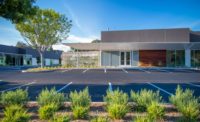
One hundred and fifteen years ago education for African Americans in South Carolina changed. That is when South Carolina State University opened as an agricultural and mechanical training school for African Americans. Since 1896, the university has survived the Depression, two World Wars and the turmoil of Civil Rights demonstrations.
Despite an expanding curriculum and a growing campus, the university faces new struggles today, including underfunding that has led to the closing and deterioration of some buildings on campus. But despite these challenges, the university has remained committed to preserving its history. A building that tells a story of SC State’s roots is Lowman Hall. This building’s history shines even brighter today after an extensive renovation project featuring a metal roof.
Lowman Hall was built in 1917 as a dormitory by students based on the design of Miller F. Whittaker. Whittaker was the director of the Department of Mechanical Arts at SC State and also the first practicing African American architect in South Carolina. He eventually served as university president from 1932-47. Whittaker created a hallmark university building that is the oldest standing building on campus. Lowman Hall’s status put it on the National Register of Historic Places in 1985. The registry describes Lowman Hall as a “three-story common bond brick building with a hipped roof, exposed rafter tails and hipped projecting pavilions at each end of the central core. A hip-roofed dormer with three multi-light windows is centered on the roof. There are brick quoins on each elevation. The façade features a one-story, tetra-style Ionic portico centered on the main entrance. A portico with paired Ionic columns shelters the entrances at each end.”

Built in 1917 by students, Lowman Hall is the oldest standing building on the campus of South Carolina State University. An extensive renovation project included interior and exterior renovations. These before and after shots document the repairs to plaster ceilings and wood trim in public corridors. Photos courtesy of G Matson Photo.
Because Lowman Hall is a historic site, bringing history back to life was important. Unfortunately, no one was 100 percent certain of all the details. The roof at the time of the renovation was asphalt shingles, but the team wanted to find out about the original roofing structure. John McLean, AIA, LEED AP, an associate with Watson Tate Savory, Columbia, S.C., explained, “The old Sanborn fire insurance maps showed the original roof was metal. Historic photos showed clay tile on the roof, but neither the original structure nor the Sanborn maps supported this conclusion. We have no date when the original roof had been replaced with asphalt shingles. The shingle roof was in such bad repair that in 2006 a temporary roof made of building wrap had been put over the building to close the many large holes that were letting rain pour into the structure.”

The Roofing Details
Will Fort, owner of Fort Roofing, Sumter, S.C., was interested in this project from the beginning. After reviewing the project plans and specifications for Techo Tile, he was confident Fort Roofing was the right company for the job. “We do a lot of metal roofing work, and we have a fair amount of sheet-metal experience,” Fort explained. “I knew we could take this on for a successful renovation.”General contractor Weber Construction Co., Imro, S.C., prepared the roof for Fort Roofing. Fort noted: “The existing roof construction was an old wood plank deck with felt paper and shingles. The general contractor did the shingle demo by tearing off the shingles and taking off the felt. They did some deck repairs before we came in.”

Lowman Hall was designed by Miller F. Whittaker, the director of the Department of Mechanical Arts at SC State. He served as university president from 1932-47. The three-story common bond brick building has a hipped roof, exposed rafter tails and hipped projecting pavilions at each end of the central core. A hip-roofed dormer with three multilight windows is centered on the roof. The building sported an asphalt shingle roof at the time of the restoration, but it was replaced with a metal roof in a Spanish-style profile from ATAS International Inc. Photos courtesy of G Matson Photo.
“This is a very unique project, with historic requirements for what may have been a metal roof or a clay tile roof,” said Jim Bush, vice president of sales for ATAS. “Techo Tile has the entire bases covered with a metal panel that looks like clay tile. In addition to the aesthetic requirements, the metal panels also offer a long life, durability, watertightness, low maintenance and high performance.”
Other aspects of the renovation project included masonry cleaning and re-pointing with structural repairs at deteriorated lintels, restoration of original wood double-hung windows, and restoration and painting of all wood trim. The interior also was improved with all new mechanical systems, extensive repairs to plaster walls, refinished hardwood floors, new acoustical ceilings in offices, and extensive repairs to plaster ceilings in public corridors and other significant spaces.

The building now houses administrative offices, including the president’s office and the board of trustees’ suite. In September 2010, the renovation of Lowman Hall received recognition from the American Institute of Architects Greater Columbia Section and State Chapter. Lowman Hall was awarded the AIA South Carolina Citation Award and AIA Columbia Section Merit Award.
“The reason the restoration of Lowman Hall is worthy of an award is the building is important to generations of students and staff who have passed through South Carolina State University, and the restoration of as much of the original building’s materials was done carefully to bring the building back to its former glory,” McLean noted. “It is one of the few remaining old buildings on the campus, and it sits at the top of the hill above the main university entrance in the heart of campus. For many reasons, the building had been abandoned and boarded up for more than a decade and was in a state of advanced decay. As dramatic as the before-and-after photos are, the fact that the history of the university is so strongly captured is what made the project so successful.”

